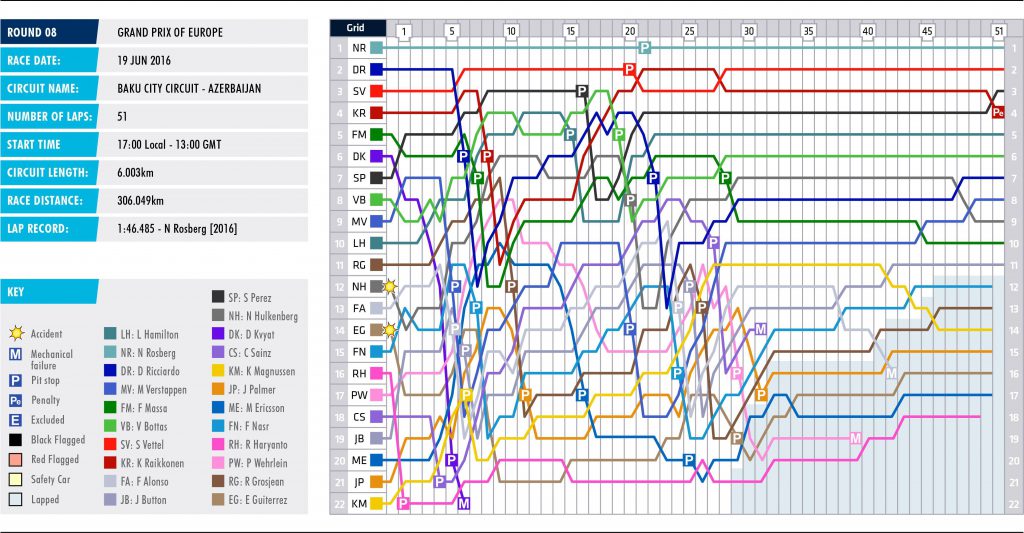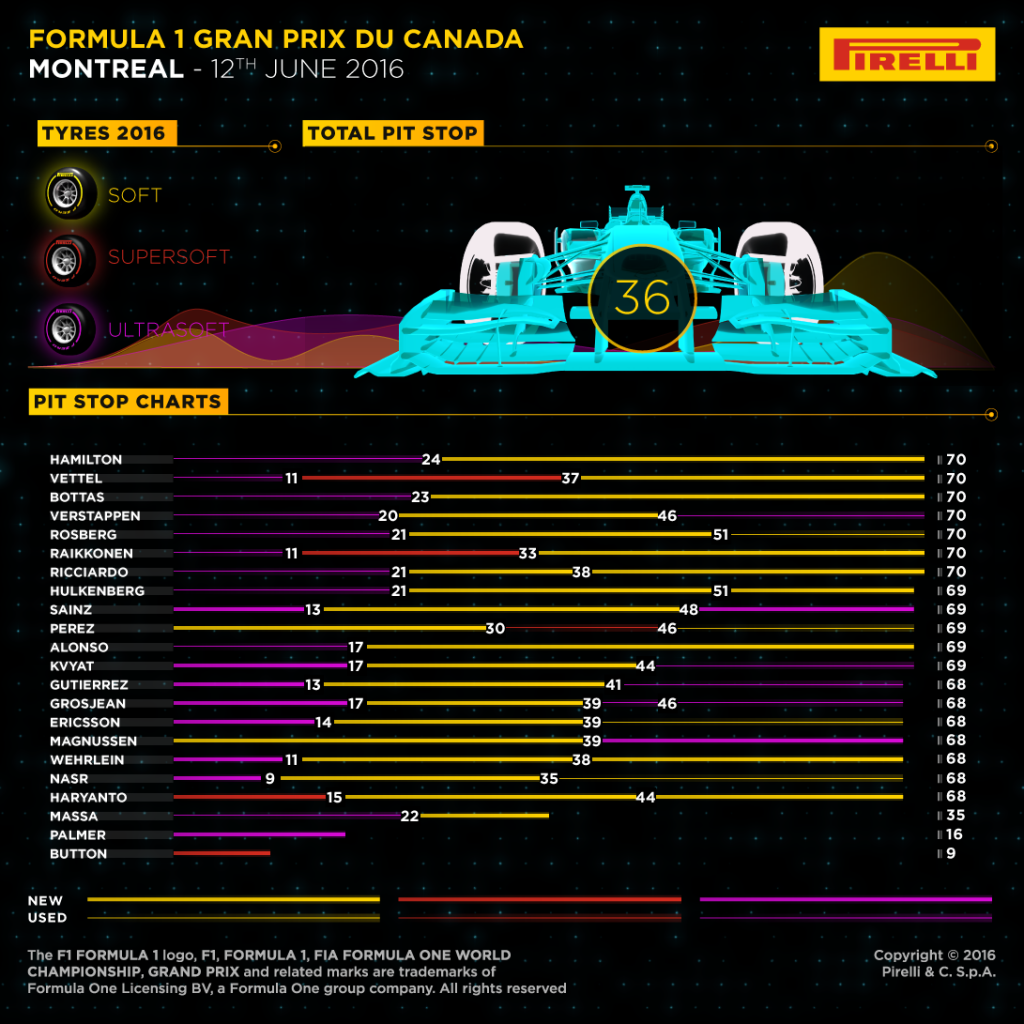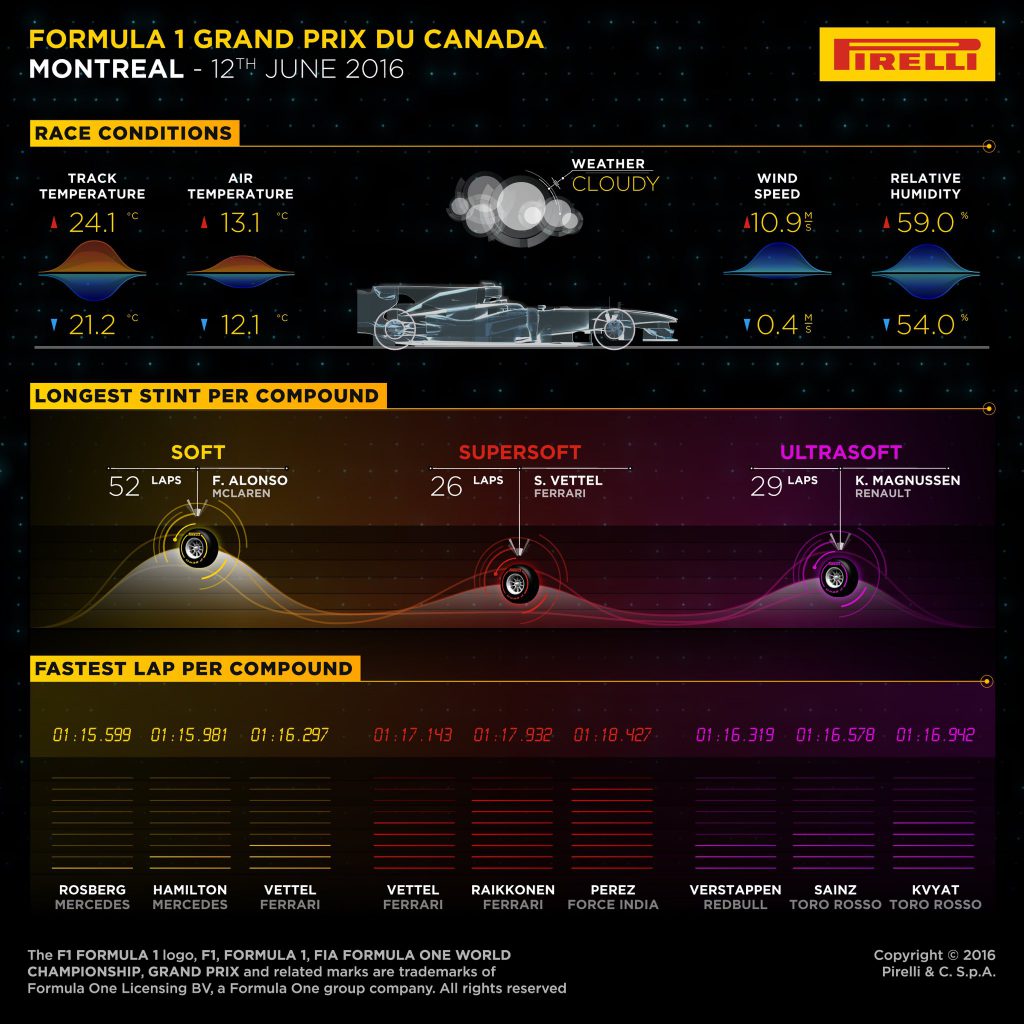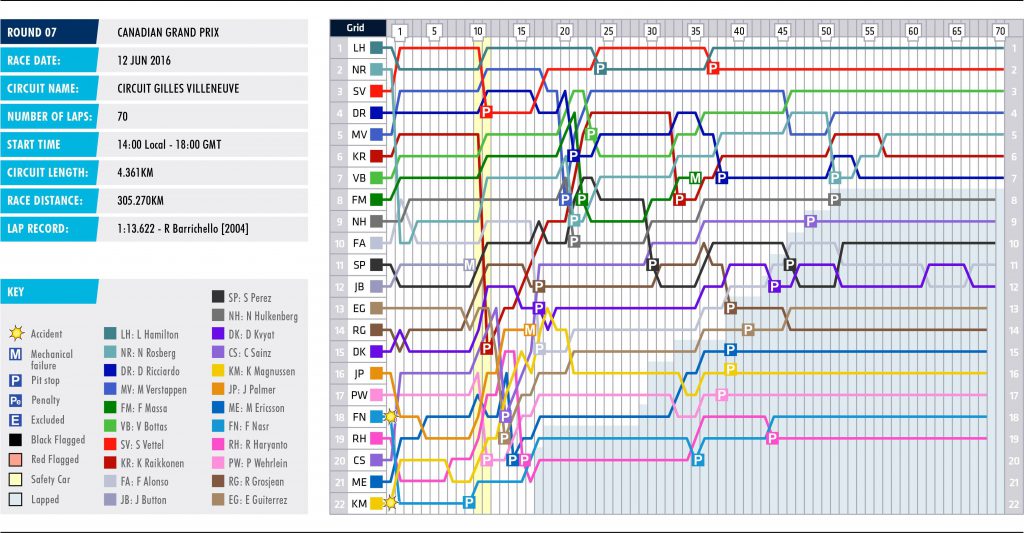Boletim Estratégico: GP da Inglaterra
14 Jul 2016
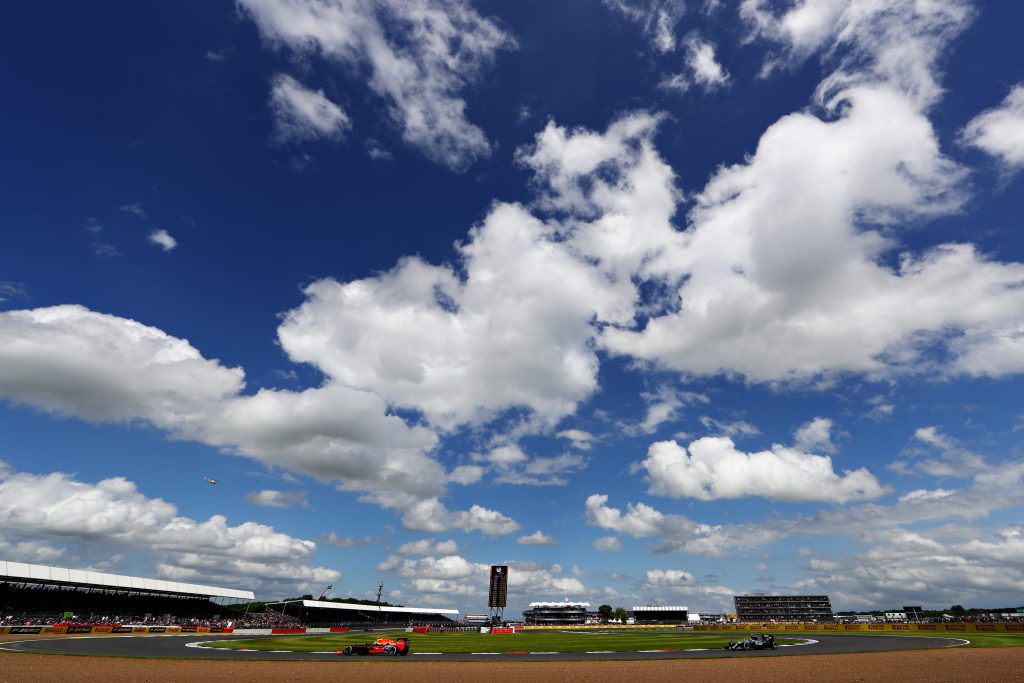
10ª Etapa – 52 Voltas – 5.891km por volta – 306.198km distância total – desgaste médio de pneus
British GP F1 Strategy Report Podcast – nosso host Michael Lamonato recebe Luke Smith da NBC Sports.
A Fórmula 1 retornou ao templo histórico de Silverstone para o GP da Inglaterra, com uma vitória dominante de Lewis Hamilton, sua 4ª na temporada e no circuito. Ainda tivemos polêmica na briga pela 2ª posição, com Nico Rosberg sendo rebaixado para 3º devido a uma penalidade pelas mensagens de rádio.
A pista secando bagunçou o grid. Além disso, a evolução da pista e o Safety Car Virtual foram fator decisivos na briga por posições. Aqui estão os principais pontos estratégicos do GP.
Largando sob Safety Car
O pneu de chuva extrema da Pirelli passou por inúmeras evoluções com o passar do anos, por isso foi frustrante assistir a largada do GP da Inglaterra atrás do Safety Car, graças a chuva que castigou o circuito antes da prova. Com a aparição do sol e as altas temperaturas, a pista foi secando gradualmente mas ainda assim tivemos que esperar até a volta 5 para que a corrida começasse de verdade.
Nós já vimos esse cuidado da FIA antes. Alguns pilotos relataram aquaplanagem nas duas primeiras voltas, mas a partir das voltas 3 e 4 a pista já parecia em condições de corrida. Outro indicativo dessas condições apropriadas foi o tráfego no pit-lane em busca dos intermediários logo que o carro de segurança voltou para os pits.
Quando Trocar?
Um dos melhores elementos estratégicos em uma transição do molhado para o seco é o desconhecido. Cada piloto tem um nível de conforto diferente em uma pista secando, além de um julgamento particular das condições. Assistir a mudança para os pneus slicks é sempre fascinante e com certeza uma das partes mais fascinantes da corrida.
Alguns optaram por fazer a troca logo que o Safety Car voltou para os pits, enquanto outros optaram por ficar mais uma volta, ou até mais. Aqueles que escolheram permanecer na pista com os pneus de chuva se beneficiaram com o Safety Car virtual gerado pelo acidente de Pascal Wehrlein, já a troca para os slicks foi traiçoeira, com muitas escapadas e rodadas sendo causadas pelo piso extremamente escorregadio fora do traçado ideal.
Sorte e revés no VSC
A entrada do Safety Car Virtual beneficou Hamilton, Rosberg, Verstappen, Perez e até Felipe Nasr, que se aproveitaram da velocidade mais baixa do pelotão para fazer a parada e ganhar muito tempo em relação aos concorrentes. No entanto, prejudicou Nico Hulkenberg e praticamente tirou Daniel Ricciardo da briga por um pódio.
Guia da Pirelli
Após o Quali, a Pirelli publicou um guia com o número de voltas sugeridas em cada composto, se a pista permanecesse seca. Silverstone costuma ser uma pista dura para os pneus e com os problemas recentes no circuito, aliados a um alto índice de desgaste nos treinos livres, ficou claro que a fornecedora italiana queria dar uma estimativa do que cada composto era capaz. Não foi expressamente “Você não pode dar mais voltas que isso”, mas sim um conselho.
A largada no molhado significou que boa parte daquela informação não era mais necessária, entretanto, equipes ainda deram mais voltas do que o recomendado, especialmente no pneu médio. Felipe Massa foi o piloto com mais voltas calçando pneus macios, com 13, ainda abaixo do guia da Pirelli, mas boa parte do grid passou das 30 voltas nos médios.
Médios funcionando bem
Como esperado, os pneus médios foram os mais utilizados na corrida, com ótimo desempenho e resistindo bem ao desgaste duro da pista inglesa. Além disso, apresentaram boa performance na pista escorregadia, aquecendo rapidamente e evitando uma degradação repentina. Por esse mesmo motivo nós vimos tantos pilotos indo até o final com os pneus brancos, após se livrarem dos intermediários.
Obviamente, alguns pilotos sofreram com o desgaste de pneus, especialmente os da Williams. O bólido não tem tanta downforce, algo que realmente faz falta em Silverstone. Massa teve que parar novamente, dessa vez para os macios, enquanto Alonso e Magnussen também foram obrigados a parar pela terceira vez.
Mercedes imbatíveis novamente
Bom, Hamilton foi. O tricampeão parecia estar em uma liga própria durante todo o GP, a pista molhada é uma de suas especialidades (Interlagos 2008 mandou lembranças) e ainda é obviamente rápido no piso seco. Sua superioridade sob chuva ficou ainda mais clara logo após a passagem para os intermediários, quando o inglês sumiu na liderança enquanto Rosberg encarava dificuldades.
O alemão tradicionalmente não tem apresentado bons resultados na chuva nessa passagem pela Mercedes, talvez por uma característica do carro, ajustes ou apenas uma falta de confiança em condições adversas. Enquanto Hamilton estendia sua liderança, Rosberg tinha que se defender de Max Verstappen, missão que o alemão cumpriu na pista, mas caiu para 3º após receber a punição pela mensagem de rádio. A Red Bull foi a melhor do resto, em uma pista que recebe muito bem o RB12.
A diferença entre os companheiros de equipe possibilitou que a Mercedes chamasse os dois para os boxes na mesma volta, o que realmente ajudou a maximizar suas estratégias e condições na prova. A equipe até roubou o prêmio de pit-stop mais rápido da Williams, quebrando a sequência de 9 corridas da equipe de Grove.
E se não tivesse chovido?
É sempre interessante pensar no que poderia ter acontecido se a corrida tivesse sido disputada no seco desde o início. A estratégia mais rápida parecia ser de duas paradas, com dois stints nos pneus macios e um nos médios, entretanto, uma pista seca poderia abrir o leque de possibilidades e poderíamos ter visto um resultado bem diferente. Domingo foi um dia bem quente e as altas temperaturas poderiam aumentar a degradação e gerar mais estratégias de três paradas.
Jack Leslie @JackLeslieF1 – BR version by Fernando Campos.
Stints mais longos
Chuva Extrema: Ericsson, Perez, Nasr, Verstappen – 7 voltas
Intermediários: Alonso, Magnussen, Gutierrez, Hulkenberg – 12 voltas
Médios: Vettel – 37 voltas
Macios: Massa – 13 voltas
Mais paradas
Palmer, Massa, Alonso, Magnussen – 3 (Incluindo drive-throughs)
Fonte
Thanks to Pirelli Motorsport for the detailed infographics
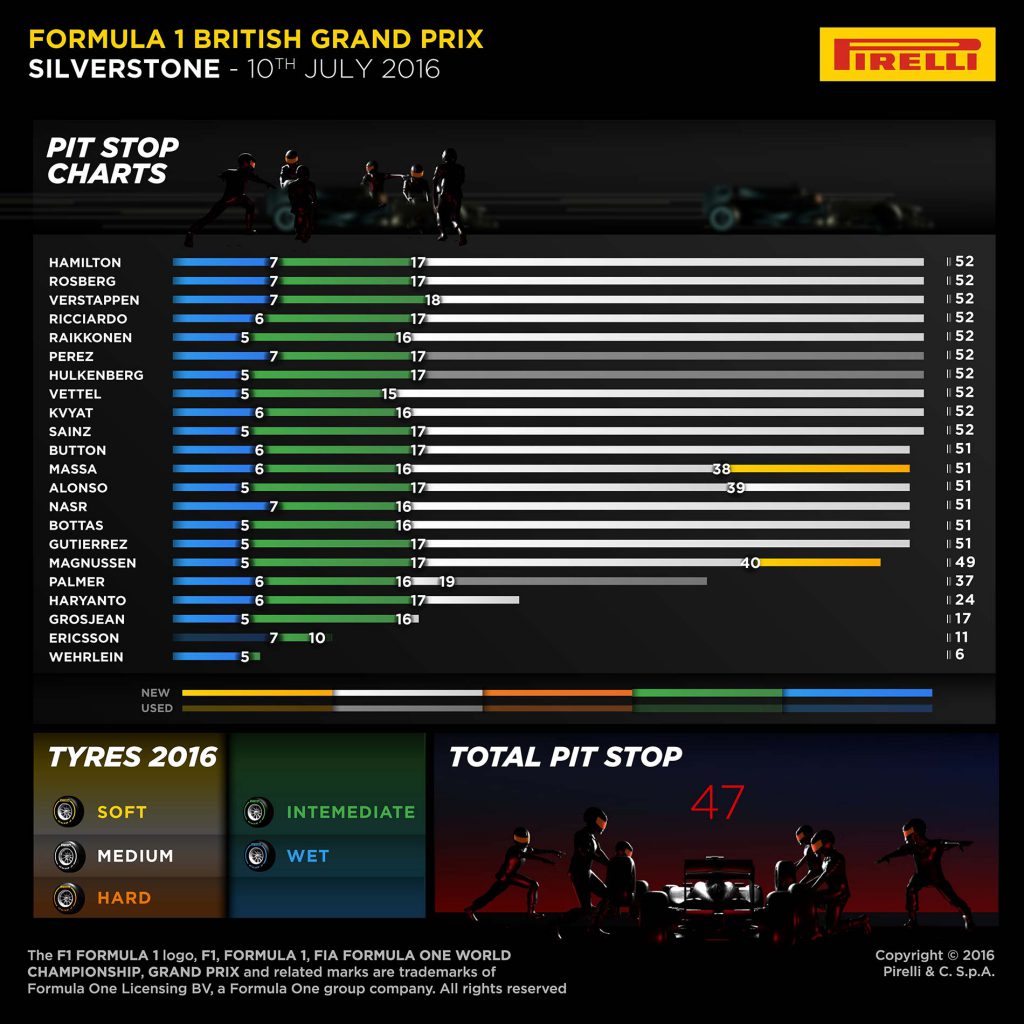
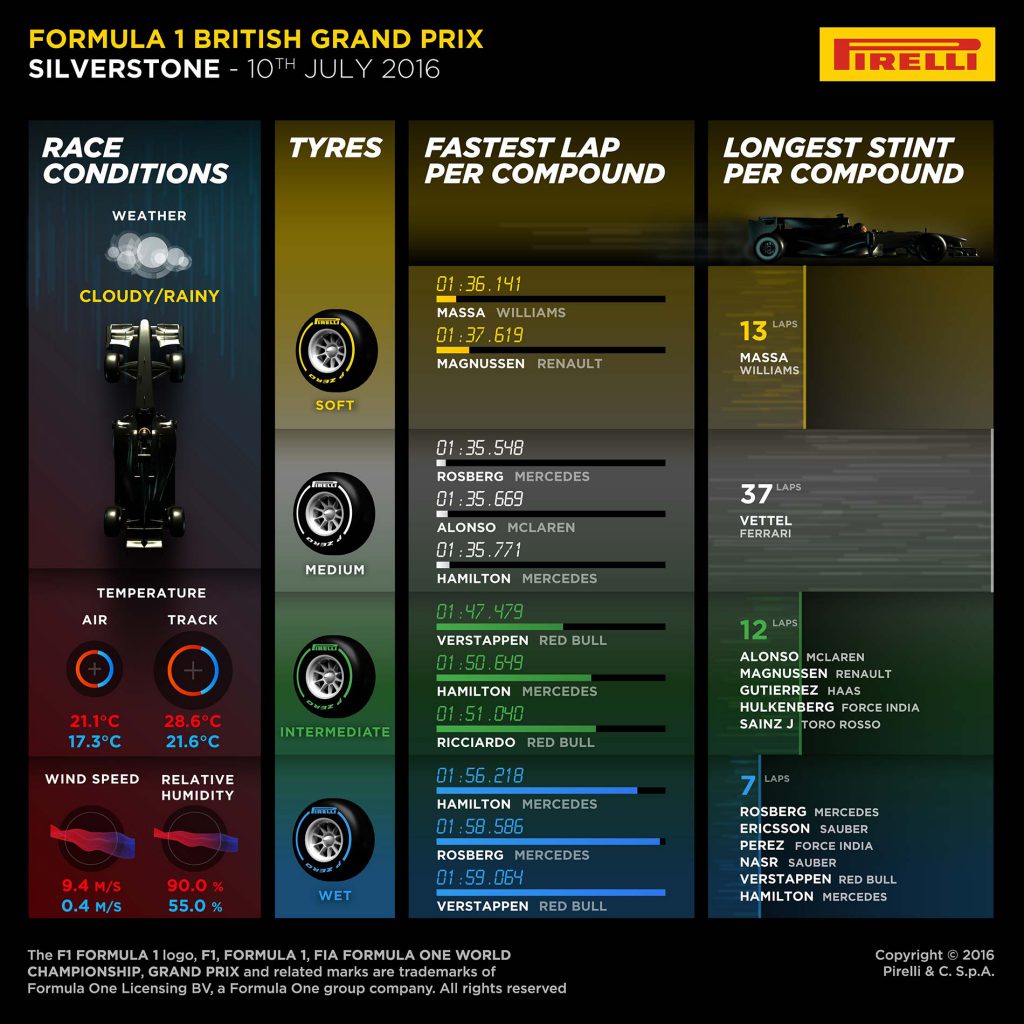
Stints by Driver
|
|
||||||||||||||||||||||||||||||||||||||||||||||||||||||||||||||||||||||||||||||||||||||||||||||||||||||||||||||||||||||||||||||||||||||||||||||||||||||||||||||||||||||||||||||||||||||||||||||||||||||||||||||||||||||||||||||||||||||||||||||||||||||||||||||||||||||||||||||||||||||||||||||||||||||||||||||||||||||||||||||||||||||||||||||||||||||||||||||||||||||||||||||||||||||||||||||||||||||||||||||||||||||||



 Safety Car
Safety Car 3. Ricciardo
3. Ricciardo 5. Vettel
5. Vettel 6. Rosberg
6. Rosberg 8. Grosjean
8. Grosjean 9. Ericsson
9. Ericsson 11. Perez
11. Perez 14. Alonso
14. Alonso 19. Massa
19. Massa 20. Magnussen
20. Magnussen 26. Kvyat
26. Kvyat 88. Haryanto
88. Haryanto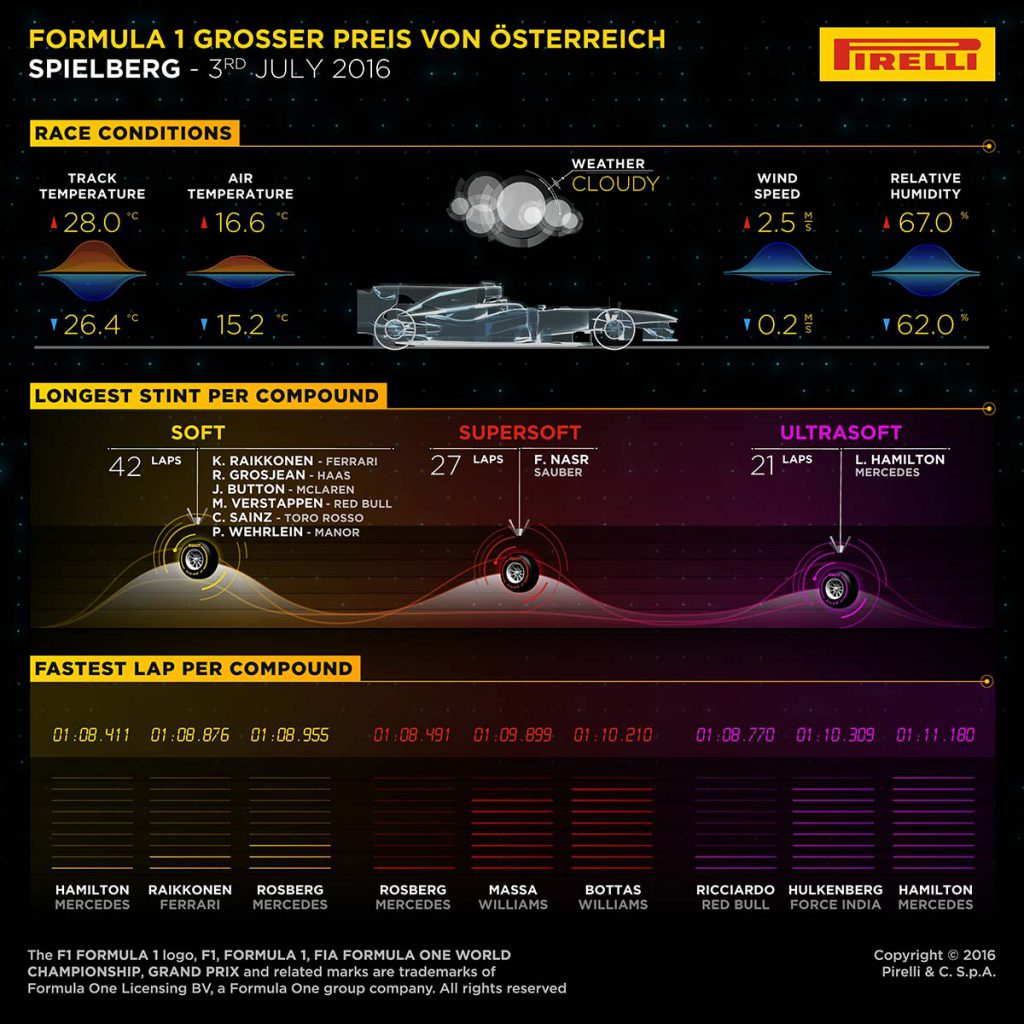
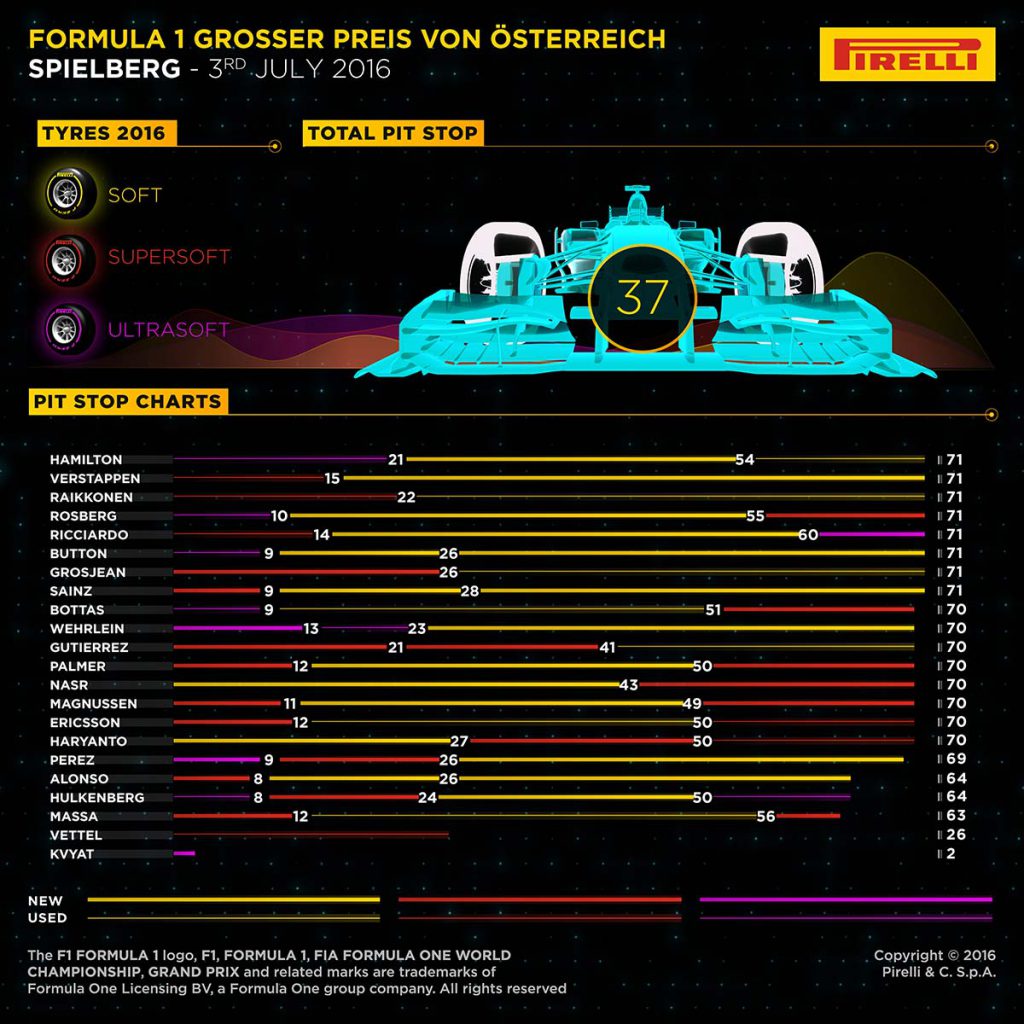
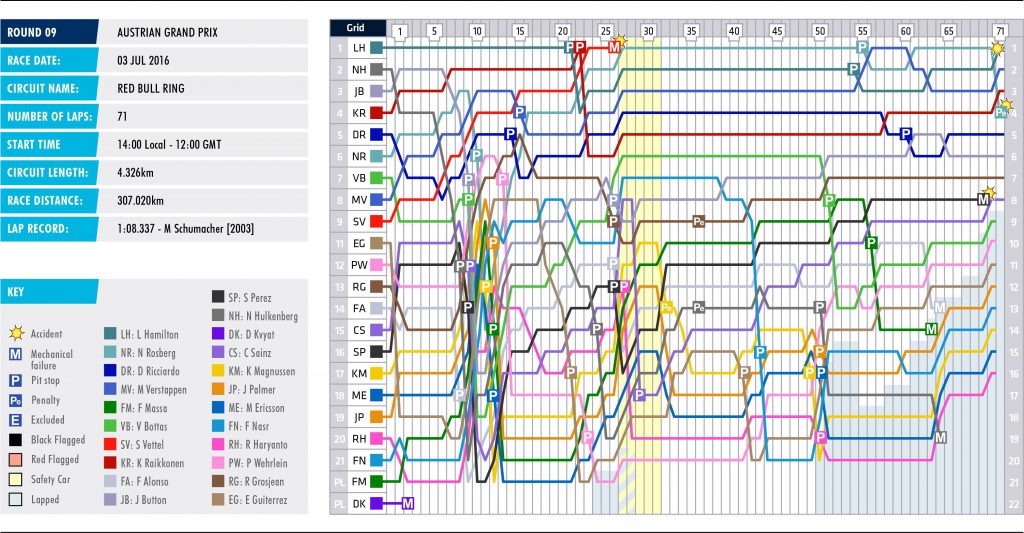
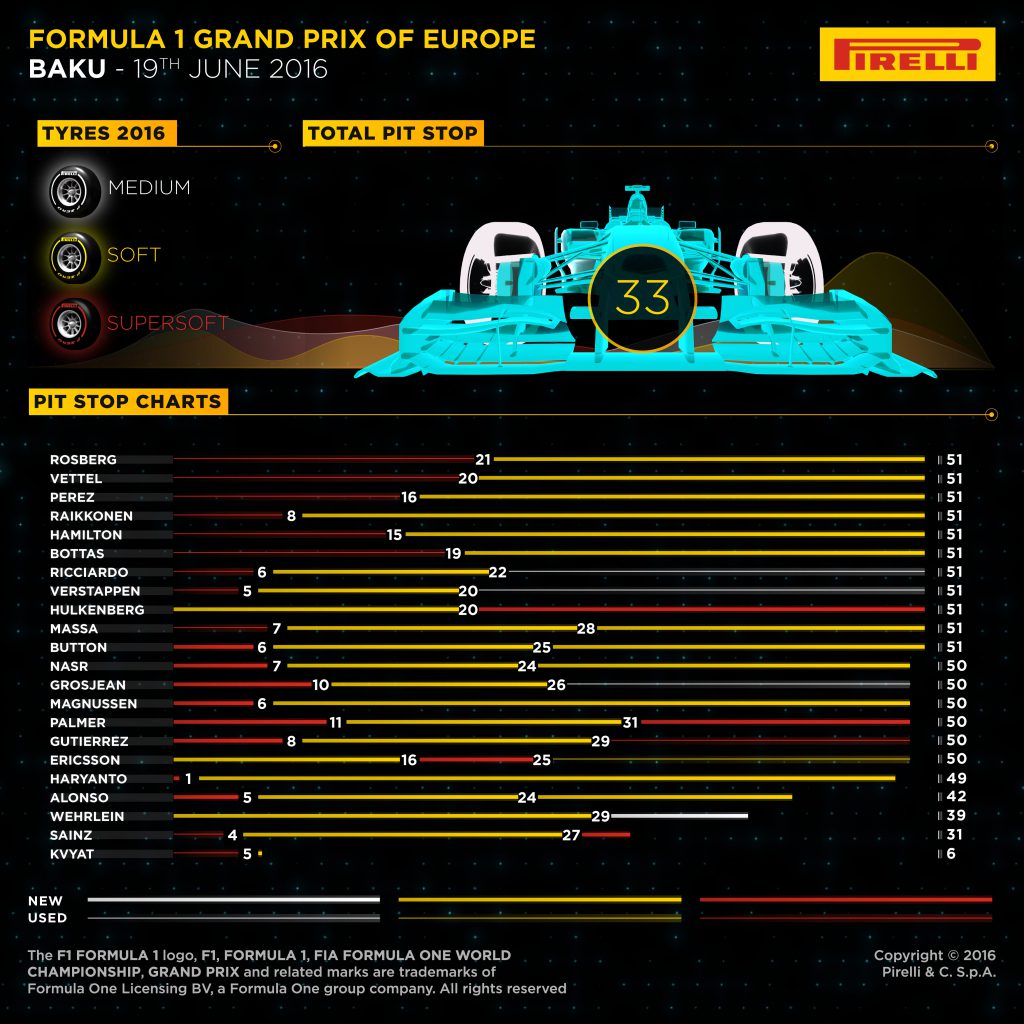
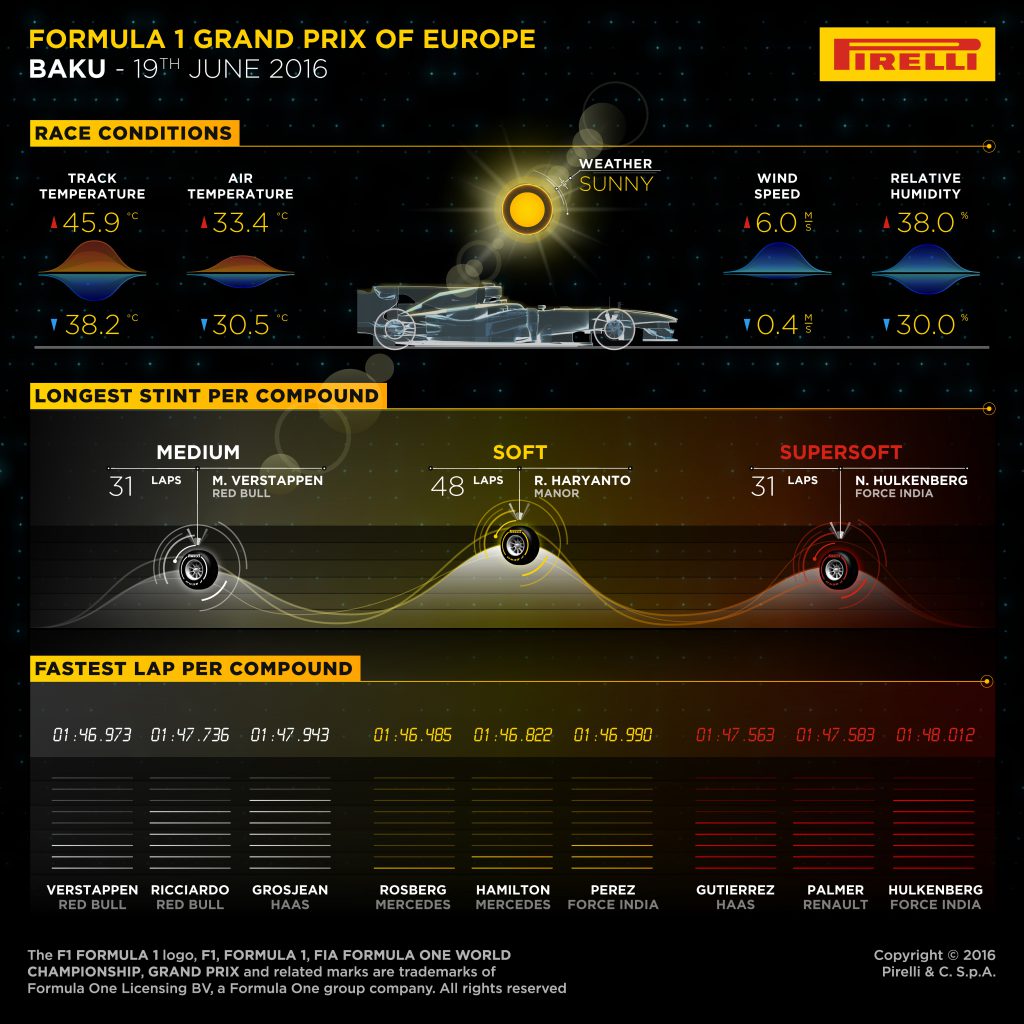
 3. Ricciardo
3. Ricciardo 5. Vettel
5. Vettel 6. Rosberg
6. Rosberg 8. Grosjean
8. Grosjean 9. Ericsson
9. Ericsson 11. Perez
11. Perez 14. Alonso
14. Alonso 19. Massa
19. Massa 33. Verstappen
33. Verstappen 88. Haryanto
88. Haryanto